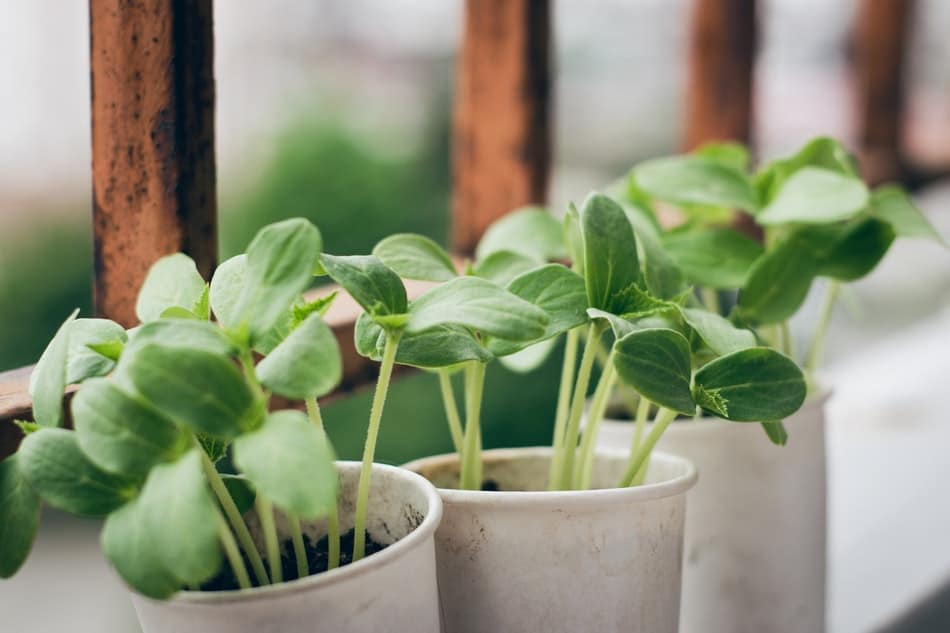Hydroponic basil is a popular choice for many gardeners. It is easy to grow and has a wonderful flavor. But can you plant hydroponic basil in soil? You’d find out as you read on. In this article, I will discuss the best way to do this. Keep reading for more information!
You can plant hydroponic basil in soil, but it’s not the ideal growing medium for this particular crop. Basil prefers a well-drained, slightly acidic growing environment, and soil can be too dense and compacted for optimal root growth.
Does Transplanting Stress Plants?
It’s a common gardening myth that transplanting stresses plants. However, this isn’t always the case. Sometimes transplanting can be beneficial for plants. Here’s a closer look at when transplanting stress plants and when it doesn’t.
One of the main reasons people believe transplanting stresses plants is because it disturbs their roots. However, as long as you’re careful not to damage the roots too much, this shouldn’t be a problem. Disturbing the roots can stimulate new growth.
Another reason people think transplanting stresses plants is because it disrupts their natural environment. But again, as long as you take care not to damage the roots, this shouldn’t be an issue either. Transplanting can give plants a chance to grow in a new and different environment.

So, does transplanting stress plants? It can, but it doesn’t have to. It all depends on how you do it. If you’re careful and take care not to damage the roots, transplanting can be beneficial for plants. So don’t be afraid to try it next time you’re looking to add some new plants to your garden.
How To Plant Hydroponic Basil In Soil
Basil is a fast-growing, annual herb that is popular in many cuisines. Native to India and other tropical countries, basil has been cultivated for centuries. Basil grows best in full sun and rich, well-drained soil. If you live in an area with cold winters, you can grow basil indoors on a sunny windowsill or under grow lights.
To plant hydroponic basil in soil, start by soaking the seeds overnight in warm water. This will help them germinate faster. Fill a planting tray or pot with a sterile seed-starting mix and make small indentations for each seed. Plant the seeds ½ inch deep and keep the soil moist but not soggy. Once the seedlings emerge, thin them out so that they are spaced about four inches apart.
Water your basil plants regularly, making sure to keep the soil moist but not soggy. When the plants are six inches tall, you can begin harvesting the leaves. Cut off individual leaves as needed, or harvest the entire plant by cutting it back to two inches above the soil. Basil is a warm-weather herb and will not tolerate frost, so be sure to bring your plants indoors before the first frost of the season. With a little care, you can enjoy fresh basil all winter long!
If you’re looking for a delicious and easy-to-grow herb, look no further than hydroponic basil! By following these simple instructions, you’ll be able to enjoy fresh basil leaves all winter long.

Is It Better To Grow Basil In Soil or Hydroponics?
The debate of soil vs. hydroponics has been around for quite some time. Each method of growing has its own set of pros and cons that make it better or worse for different growers. In the end, it comes down to what you as the grower are looking for in your basil plants. Let’s take a look at the benefits of each method:
Soil-based growing is often seen as the more traditional way to grow plants. It can be easier to control the nutrient levels in the soil, which can be beneficial for plants that are sensitive to changes in their environment. Soil also holds onto moisture better than hydroponic systems, which can help prevent root rot. On the downside, soil can be more difficult to clean and can harbor pests and diseases.
Hydroponic growing is a method that uses nutrient-rich water instead of soil to grow plants. This type of system can be easier to keep clean, and it eliminates the risk of pests and diseases that can come from contaminated soil. Hydroponics can also provide a more consistent environment for plants, which can lead to better growth. However, hydroponic systems often require more maintenance than soil-based systems, and they can be more expensive to set up.
So which is better? The answer depends on your needs as a grower. If you’re looking for an easy-to-maintain system with fewer pest and disease problems, hydroponics might be the way to go. If you’re looking for a more traditional growing method that is easier to control, soil-based growing might be a better option. Ultimately, the best way to grow basil is the way that works best for you.
How Do You Keep Hydroponic Basil Alive?
There are a few key things to remember when it comes to keeping your hydroponic basil alive. First and foremost, you need to make sure that the roots of your plant are always submerged in water. If they aren’t, they will start to rot and your plant will quickly die. Secondly, you need to make sure that you are using the right type of fertilizer for your plants. Basil is a very delicate plant and too much or too little fertilizer can easily kill it. Finally, you need to make sure that you are providing enough light for your plants. Basil needs at least six hours of direct sunlight each day to thrive.
If you can remember these few simple tips, then you should have no problem keeping your hydroponic basil alive and healthy for a long time.
Final Words
The bottom line is that you can plant hydroponic basil in soil, but it’s not the ideal growing medium for this type of plant. If you’re looking to get the most out of your hydroponic system, you should stick to using a hydroponic-specific growing medium. However, if you’re just starting with hydroponics or are looking to experiment with different growing methods, the soil is a good option to start with. Just be aware that your plants may not reach their full potential if grown in this way.
Related Articles

